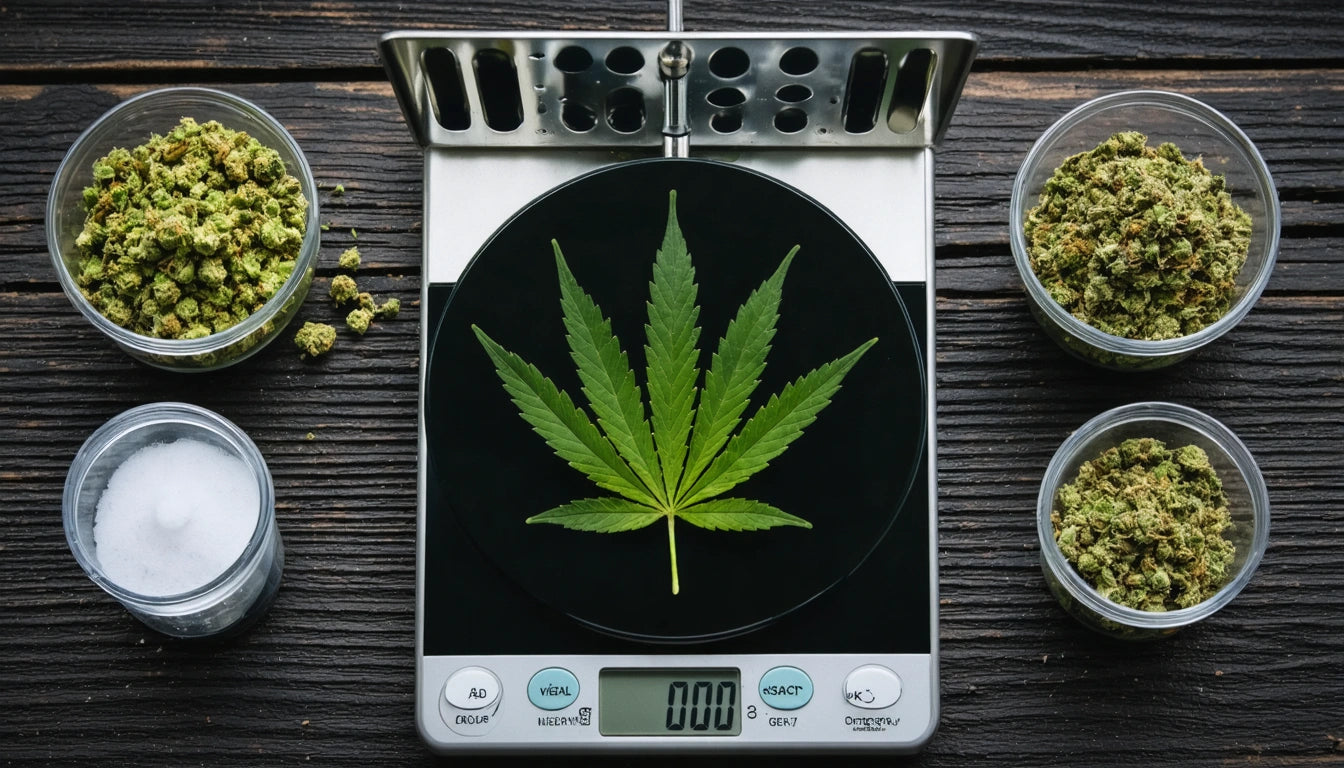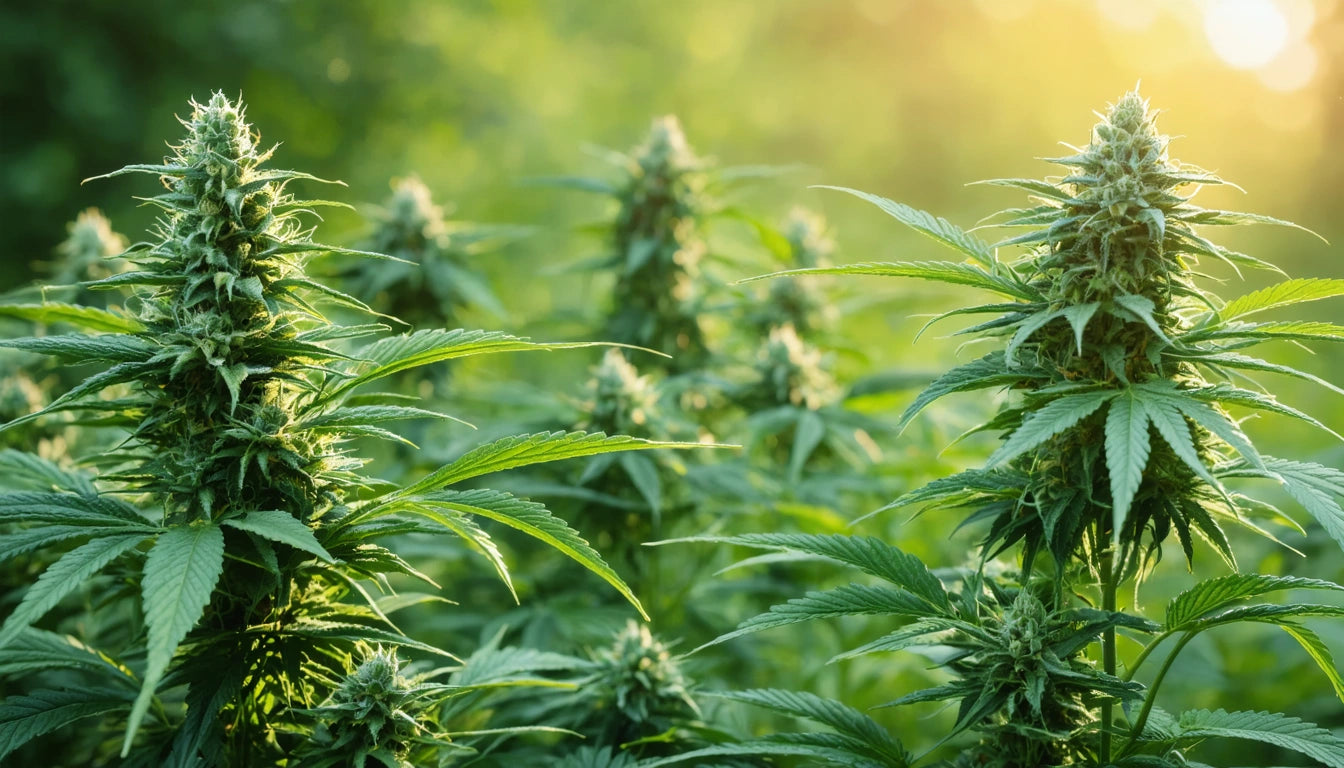Table of Contents
How to Weigh Weed: A Comprehensive Guide With and Without a Scale
Accurately weighing cannabis is essential for both consumers and businesses in the industry. Whether you're verifying a purchase or preparing products for sale, understanding how to weigh weed properly ensures fair transactions and consistent experiences. This guide covers standard measurement practices, scale techniques, and alternative methods when traditional equipment isn't available.
Understanding Cannabis Weight Measurements
Cannabis is typically measured using the metric system, with grams as the base unit. However, the industry also uses imperial measurements, creating a hybrid system unique to cannabis:
- 1 gram - The smallest common retail quantity
- 3.5 grams - An eighth of an ounce
- 7 grams - A quarter ounce
- 14 grams - A half ounce
- 28 grams - One ounce
- 448 grams - One pound
Understanding these conversions is crucial when buying or selling cannabis. For a deeper dive into these measurements, check out how much an ounce of weed weighs in grams.
How to Weigh Weed With a Scale
Digital scales provide the most accurate way to measure cannabis weight. When selecting a scale for weighing flower, concentrates, or other cannabis products, look for models with precision to at least 0.1 grams.
Digital Scale Basics
To properly weigh weed on a digital scale:
- Place the scale on a flat, level surface
- Turn on the scale and wait for it to stabilize
- Press the tare button to zero out the display
- Place a small container on the scale and tare again
- Add your cannabis to the container
- Read the weight displayed
For businesses handling larger quantities, understanding the true weight of a pound of weed becomes important for inventory management.
Calibration Techniques
Proper calibration is essential for accurate measurements:
- Use calibration weights that match your scale's capacity
- Follow the manufacturer's calibration procedure
- Recalibrate periodically, especially after moving the scale
- Check accuracy with known weights before important measurements
For dispensary operations, precise measurements are not just good practice but often a regulatory requirement. Reference this guide on quarter and half ounce measurements for compliance standards.
How to Weigh Weed Without a Scale
When a scale isn't available, several alternative methods can provide rough estimates of cannabis weight.
The Ruler Method
This DIY balance scale requires:
- A ruler or straight stick
- A pivot point (pencil or similar object)
- A known weight (a dollar bill weighs approximately 1 gram)
- Two identical containers
Balance the ruler on the pivot, place containers at each end, add your known weight to one side and cannabis to the other until balanced.
Smartphone Apps
Some smartphone apps claim to weigh small objects, but their accuracy for cannabis is questionable. These typically work by:
- Using the phone's accelerometer to measure pressure when an object is placed on the screen
- Requiring calibration with known weights
- Providing rough estimates at best
For more reliable measurements, investing in proper equipment is recommended. Businesses should reference this detailed explanation of cannabis measurements for commercial applications.
Household Items Comparison
Common household items can serve as rough weight references:
- A paperclip weighs roughly 1 gram
- A nickel weighs exactly 5 grams
- A penny weighs 2.5 grams
- A quarter weighs 5.67 grams
Visual comparison with these items can provide a general sense of weight, though this method is far from precise.
Visual Estimation Techniques
With experience, many cannabis consumers develop the ability to visually estimate weights:
- A gram typically appears as a small nugget or a few smaller pieces
- An eighth (3.5g) usually fills a small prescription bottle
- A quarter ounce creates a modest handful
- An ounce typically fills a sandwich bag
However, visual estimation varies significantly based on the density and moisture content of the flower. Dense, compact strains weigh more than fluffy ones of the same volume, making visual estimates inconsistent. For more details on standard quantities, see this explanation of ounces in a pound.
Tools That Improve Weighing Accuracy
Beyond basic scales, several specialized tools can improve weighing accuracy and efficiency. For commercial operations handling significant volume, automated grinding equipment can help maintain consistency in both processing and portioning cannabis products.
Other helpful tools include:
- Calibration weights for regular accuracy checks
- Static-free weighing trays to prevent material loss
- Digital scales with wind guards for volatile concentrates
- Moisture meters to account for weight fluctuations
For businesses, investing in quality measurement tools is essential for compliance, customer satisfaction, and inventory control. The cannabis industry's unique measurement system requires specialized knowledge and equipment to navigate effectively.
Whether you're using sophisticated digital scales or improvising with household items, understanding how cannabis is weighed helps ensure you're getting what you pay for or providing fair value to your customers. As the industry continues to mature, standardized weighing practices will become increasingly important for both regulatory compliance and consumer confidence.











Leave a comment
All comments are moderated before being published.
This site is protected by hCaptcha and the hCaptcha Privacy Policy and Terms of Service apply.